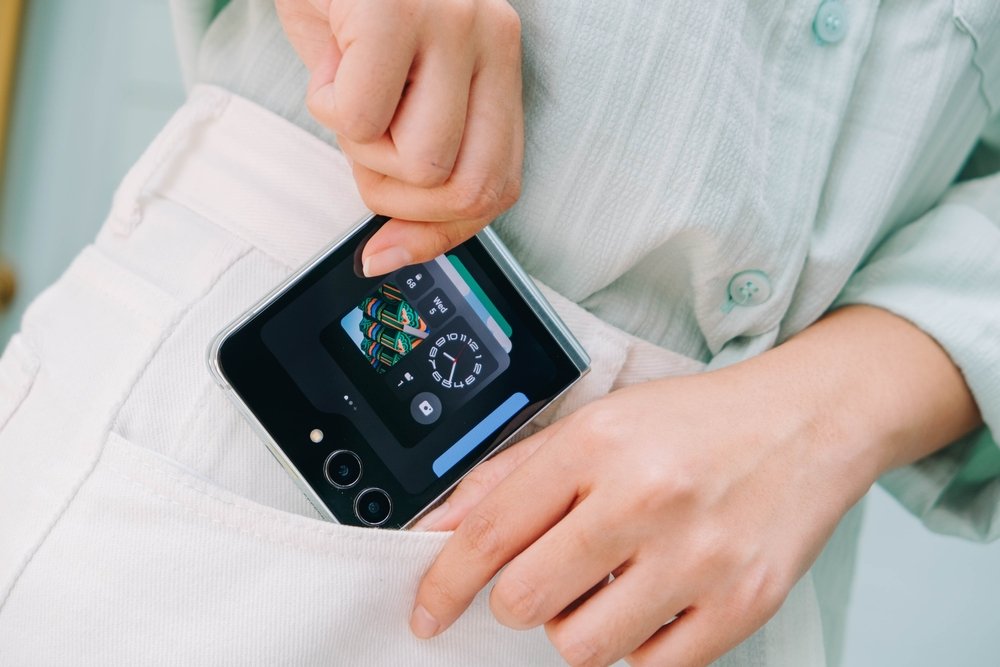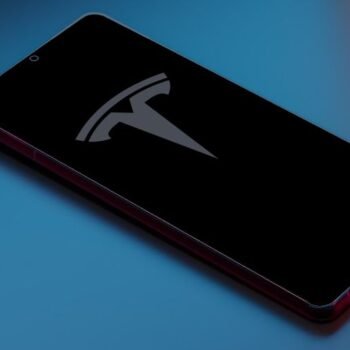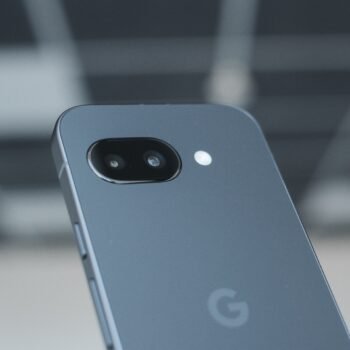Foldable phones sales soared 67% globally during 2024, hitting 25.8 million units. That strong growth continues into 2025. Samsung, Google, and Motorola keep pushing further. People wonder if these flexible devices are finally ready for everyone, or if they stay costly experiments.
Three main shapes rule the market now. Book-style foldables, such as Samsung’s Z Fold, turn a phone into a small tablet. Clamshell flip phones fold small to fit easily in pockets. More affordable flip models bring folding tech to more buyers. Each type meets different needs. Yet all aim to revolutionize how we use our gadgets.
TL;DR: Foldable Phones for Busy Readers
Top 3 Findings:
- Battery life improved dramatically — Motorola Razr Ultra delivers 47+ hours of usage
- Prices dropped significantly — entry-level foldables now start at $699
- AI integration transforms productivity with Galaxy AI, Gemini Live, and Moto AI features
Best Picks by Category:
- Best Overall: Samsung Galaxy Z Flip 7 — Perfect balance of features and price
- Best Multitasking: Samsung Galaxy Z Fold 7 — Unmatched productivity powerhouse
- Best Value: Motorola Razr (2025) — Premium features without premium pricing
The 2025 Foldable Phones: Innovation vs. Refinement
This year marks a shift from breakthrough innovation to thoughtful refinement. Samsung’s Galaxy Z Fold 7 measures just 4.2mm when unfolded – thinner than most traditional smartphones. Motorola’s new Armor FlexHinge promises 400,000 fold cycles, while Google focuses on software optimization over hardware drama.
Design Evolution Highlights:
- Reduced crease visibility across all major brands
- IP48 dust and water resistance becomes standard
- Titanium construction improves durability without adding weight
- Larger cover screens eliminate need to unfold for basic tasks
IP48 rating adoption represents a major milestone. While not fully waterproof like IP68 phones, these devices now survive everyday splashes and dust exposure that would have destroyed earlier generations.
Head-to-Head: Flagship Foldables Reviewed
Samsung Galaxy Z Series: The Productivity Kings
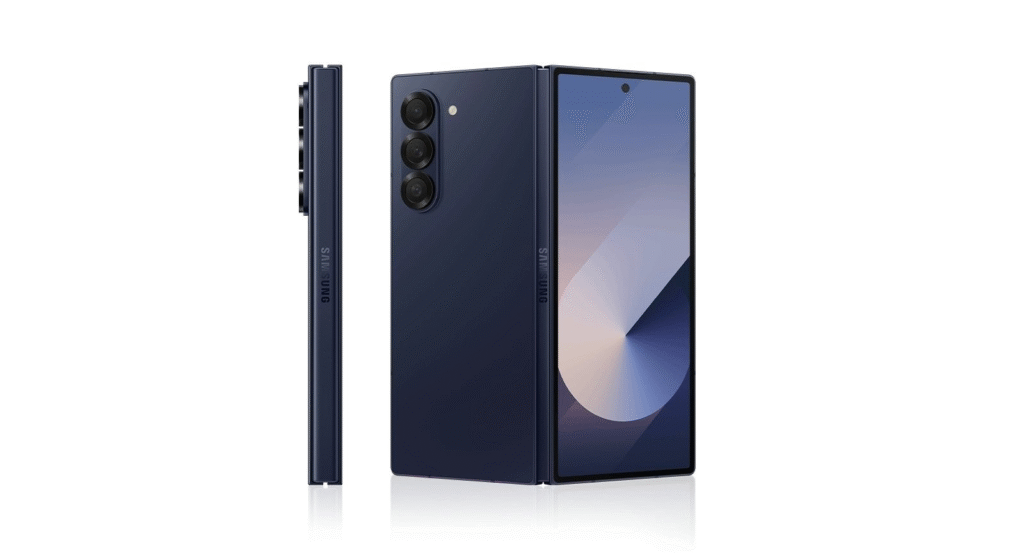
- Galaxy Z Fold 7 stands as the ultimate productivity machine. Its 8-inch main display rivals small tablets, while DeX mode transforms it into a desktop computer. The 200MP main camera finally matches flagship slab phones, though low-light performance still lags behind dedicated camera phones.
Gemini Live AI integration shines here. Voice conversations feel natural, and the large screen makes AI-powered document editing genuinely useful. Galaxy AI features like Photo Assist and Now Brief work seamlessly across both screens.
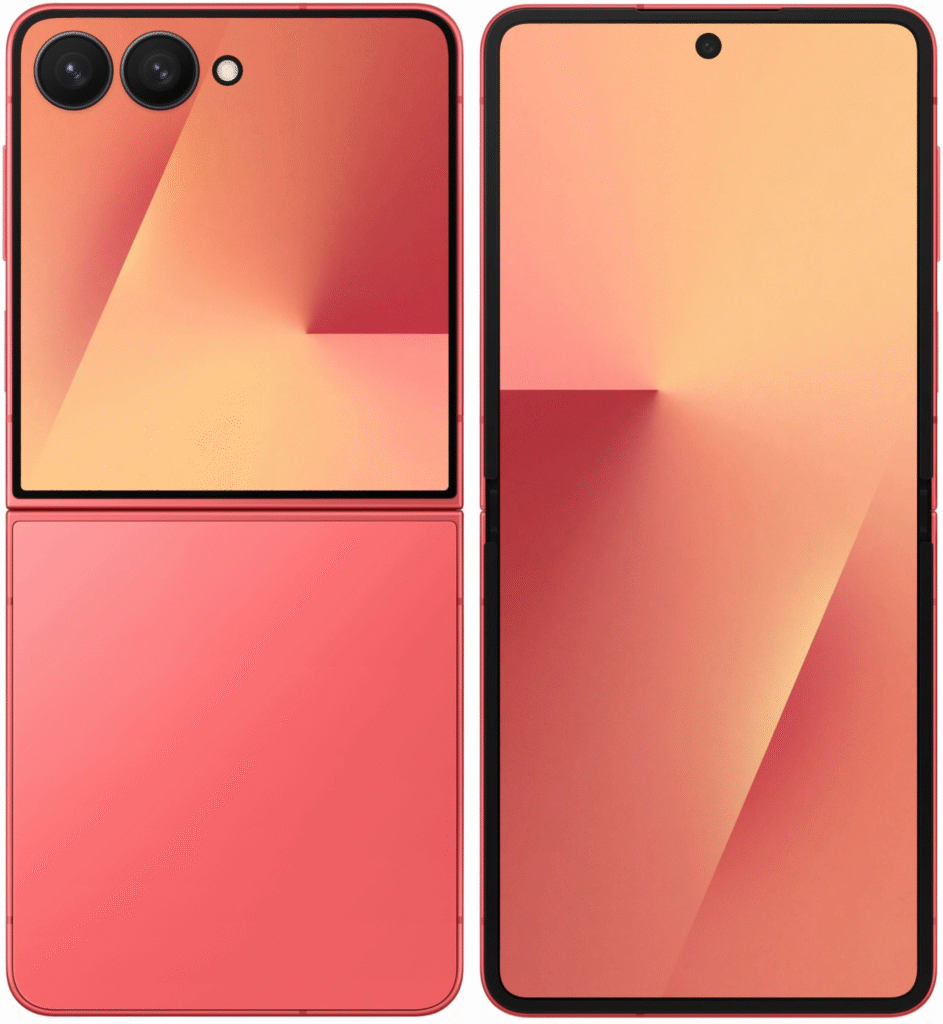
- Galaxy Z Flip 7 brings DeX support to flip phones for the first time. The 4.1-inch Flex Window handles most tasks without unfolding, from replying to messages to controlling smart home devices. Battery life reaches 36 hours – respectable but not class-leading.
Motorola Razr Family: Cover Screen Champions
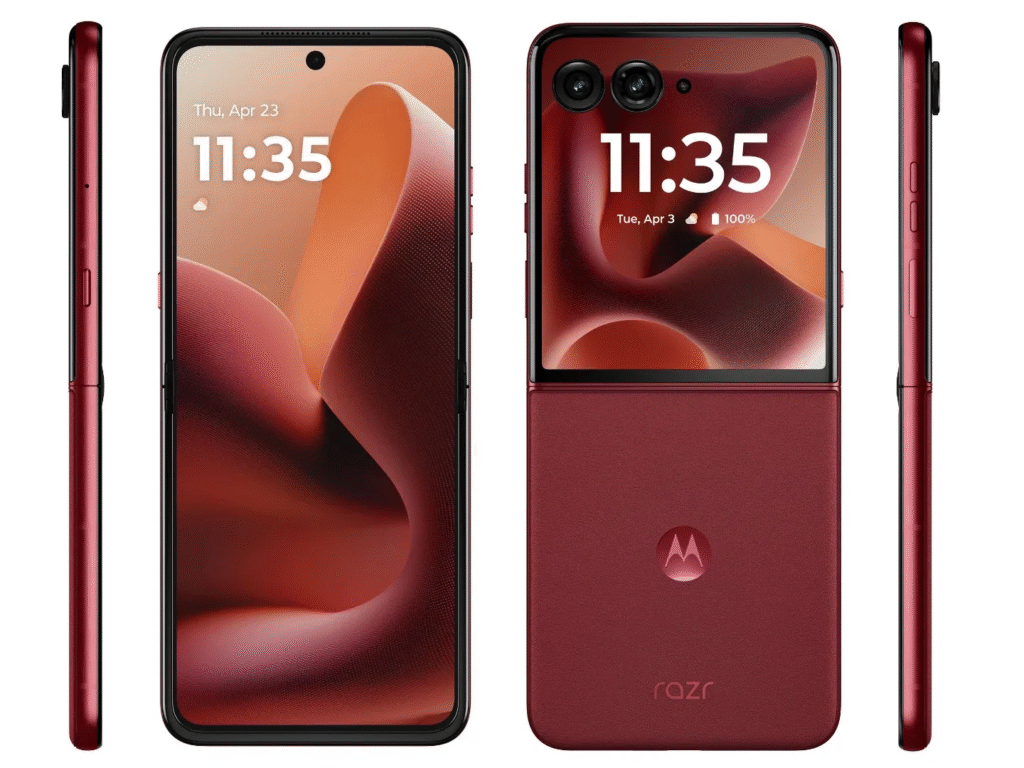
- Motorola Razr Ultra (2025) dominates cover screen functionality. Unlike Samsung’s widget-based approach, Motorola allows full Android apps on the 4-inch outer display. Snapdragon 8 Elite provides flagship performance, while the 4,700mAh battery delivers exceptional 47-hour endurance.
The 165Hz refresh rate makes interactions buttery smooth. However, camera performance shows inconsistencies – particularly a “glow” artifact in certain lighting conditions that affects photo quality.
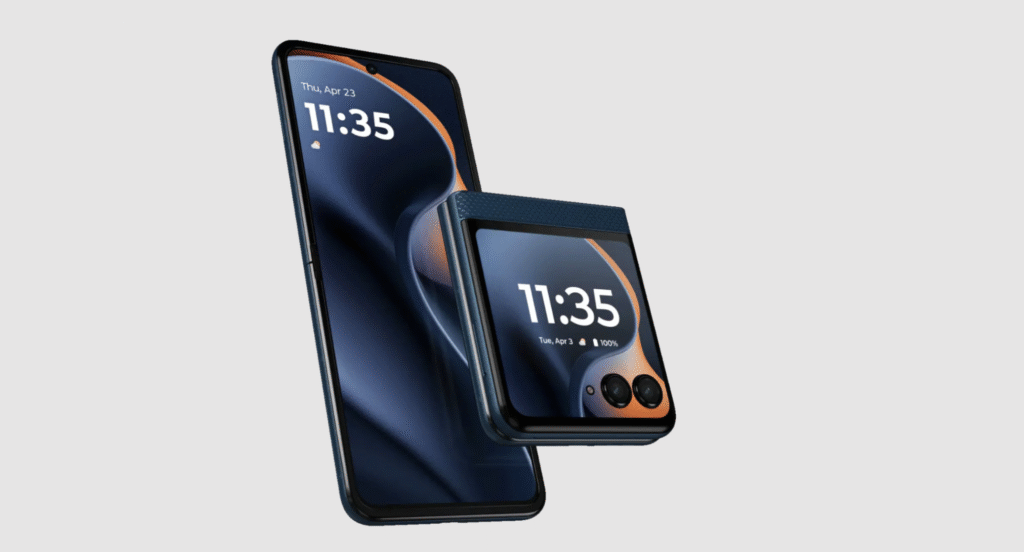
- Motorola Razr (2025) brings foldable technology to budget-conscious buyers at $699. The 3.6-inch cover screen handles essential tasks well, though the Dimensity 7400X processor shows its limitations during intensive multitasking. Pantone camera tuning produces pleasing colors, but detail capture falls short of flagship expectations.
Google Pixel 9 Pro Fold: AI-First Foldable
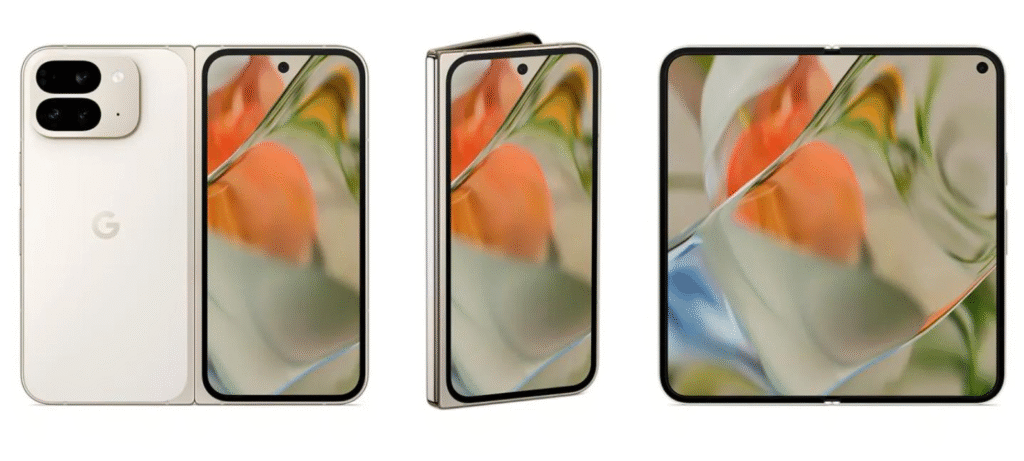
Google’s approach prioritizes artificial intelligence over raw specifications. Gemini Advanced integration feels more natural than competitors, with contextual suggestions that actually prove helpful. The device excels at computational photography, delivering impressive 8K video recording.
Multitasking capabilities disappoint compared to Samsung’s implementation. App continuity between screens works inconsistently, and the lack of DeX-style desktop mode limits productivity potential.
Critical Comparisons: Where Foldable Phones Still Struggle
Battery Life: Progress But Not Parity
Testing reveals significant improvements but persistent gaps. Motorola Razr Ultra leads with 47 hours of mixed usage, followed by Google Pixel 9 Pro Fold at 41 hours. Samsung’s devices trail – Z Flip 7 manages 36 hours while Z Fold 7 reaches just 32 hours under heavy use.
Fast charging partially compensates. Motorola’s 68W charging fills the Razr Ultra in 45 minutes, while Samsung’s 45W solution takes over an hour for Z Fold 7.
Camera Compromises
Foldable phones still can’t match dedicated camera flagships. Space constraints force compromises in sensor size and optical zoom capabilities. Samsung Z Fold 7’s 200MP main sensor produces sharp daylight photos but struggles in challenging conditions compared to Galaxy S25 Ultra.
Flip phones face greater limitations. Cover screen selfies often rely on main cameras, but awkward positioning affects composition. The Razr Ultra’s dual 50MP setup performs well in good light but lacks telephoto versatility.
Price vs. Longevity
Samsung commits to seven years of software updates, matching traditional flagships. Motorola provides three years – adequate but concerning given foldables’ premium pricing. Google promises five years, splitting the difference.
Repair costs remain high. Screen replacements typically cost $300-500, though Motorola offers free protective film replacements – a thoughtful touch that acknowledges real-world wear patterns.
Foldable Phones Specs Table
| Model | Display (Main/Cover) | CPU | Cameras | Battery & Charging | Price |
| Samsung Z Fold 7 | 8.0″ AMOLED / 6.5″ AMOLED | Snapdragon 8 Elite | 200MP+12MP+10MP | 4,400mAh, 45W wired | $1,999 |
| Samsung Z Flip 7 | 6.9″ AMOLED / 4.1″ AMOLED | Exynos 2500 | 50MP+12MP | 4,000mAh, 25W wired | $1,099 |
| Moto Razr Ultra | 7.0″ pOLED / 4.0″ pOLED | Snapdragon 8 Elite | 50MP+50MP | 4,700mAh, 68W wired | $1,299 |
| Moto Razr (2025) | 6.9″ pOLED / 3.6″ pOLED | Dimensity 7400X | 50MP+13MP | 4,500mAh, 30W wired | $699 |
| Google Pixel 9 Pro Fold | 7.2″ OLED / 5.8″ OLED | Tensor G4 | 50MP+48MP+48MP | 4,600mAh, 30W wired | $1,799 |
Real-World Use Cases: Who Should Buy Foldable Phones?
- Power Users and Multitaskers benefit most from book-style foldables. Running three apps simultaneously on Z Fold 7 genuinely improves productivity. DeX mode enables laptop-replacement scenarios for travel or remote work.
- Style-Conscious Users gravitate toward flip phones. The compact folded form factor fits anywhere, while large cover screens reduce unfolding frequency. Fashion-forward colors and premium materials justify higher prices for image-conscious buyers.
- Budget Experimenters can now explore foldable technology without massive financial commitment. Motorola Razr (2025) at $699 offers authentic folding experience with acceptable compromises.
- Repairability considerations matter long-term. Motorola’s free screen liner replacement program acknowledges that protective films wear out. Samsung’s extensive service network provides peace of mind, while Google’s limited repair options concern potential buyers.
The Verdict: Hype vs. Reality in 2025
Foldable phones deliver genuine utility that traditional smartphones cannot match. Book-style devices excel at productivity tasks, while flip phones offer unmatched portability. However, trade-offs persist in battery life, camera performance, and pricing.
Worth buying for:
- Tech enthusiasts who appreciate cutting-edge design
- Productivity power users needing tablet functionality
- Style-focused users wanting unique form factors
- Frequent travelers valuing compact storage
Not yet ideal for:
- Photography enthusiasts requiring best-in-class cameras
- Budget-conscious buyers (except Razr 2025)
- Users prioritizing maximum battery life
- Those preferring simple, reliable technology
FAQ: Your Foldable Questions Answered
Are foldable phones durable in 2025?
IP48 ratings provide dust and splash resistance, while titanium construction improves structural integrity. However, hinge mechanisms remain complex moving parts requiring careful handling. Samsung and Motorola hinges now survive 400,000+ fold cycles under testing conditions.
Which foldable has the best battery life?
Motorola Razr Ultra leads with 47+ hours of mixed usage thanks to its 4,700mAh battery and efficient Snapdragon 8 Elite processor. Google Pixel 9 Pro Fold follows at 41 hours, while Samsung devices trail with 32-36 hours depending on usage patterns.
Can you use apps on cover screens?
Motorola allows full Android apps on cover screens, providing genuine smartphone functionality when folded. Samsung limits cover screen interactions to widgets and specific optimized apps, though functionality continues expanding through software updates.
Is the Samsung Galaxy Z Fold 7 worth $2,000?
Only for users who genuinely need tablet-level multitasking capabilities and desktop replacement features through DeX mode. Casual users will find better value in traditional flagships or more affordable foldables like Motorola’s offerings.
Do foldable phones support wireless charging?
Most flagship foldables include wireless charging – Samsung Z series, Google Pixel 9 Pro Fold, and Motorola Razr Ultra all support Qi wireless charging. However, budget options like Motorola Razr (2025) omit wireless charging to reach lower price points.


